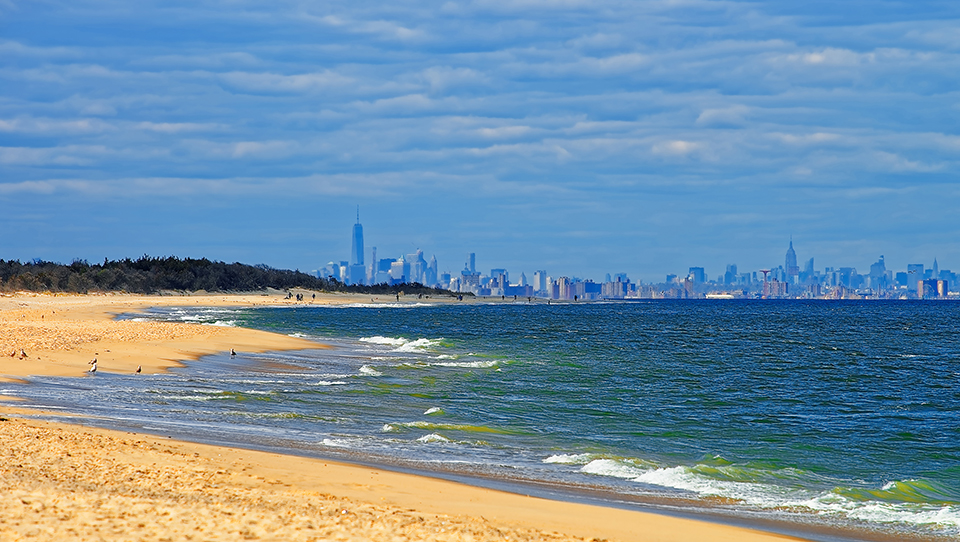When the COVID-19 pandemic forced university laboratories to shut down or go remote, the NIEHS Superfund Research Program (SRP) created an opportunity for trainees to celebrate their research efforts and the stories behind them. Led by SRP Health Scientist Administrator Danielle Carlin, Ph.D., SRP hosted a scientific art competition for trainees.
The trainees — all of whom hail from SRP centers across the U.S. — submitted entries in one of the following four categories:
- Field experiments.
- Laboratory experiments.
- An image of something seen while staying safe.
- Artwork created while social distancing.
Entries also included explanations of the science behind the art. The images will be displayed at the SRP annual meeting in Raleigh, North Carolina, Dec. 15-17.
Field experiments and rainbows
This category garnered the most submissions, and trainees showed off their innovative approaches to safely conducting field experiments and community engagement work.
Alma Anides Morales, a doctoral student at the University of Arizona, won first place. She studies microbial soil contamination and potential health risks due to historic sewage overflows in Arizona.
 Anides Morales and other University of Arizona researchers visited the U.S.-Mexico border in February 2019 to document location and flows of transborder sewage overflows. (Photo courtesy of the trainee’s mentor, Monica Ramirez-Andreotta)
Anides Morales and other University of Arizona researchers visited the U.S.-Mexico border in February 2019 to document location and flows of transborder sewage overflows. (Photo courtesy of the trainee’s mentor, Monica Ramirez-Andreotta)- Jennifer Toyoda, a doctoral candidate from the University of Louisville, won second place. She studies the biological mechanisms of chromium-induced lung cancer.
- Third place was a tie between doctoral students Ezazul Haque, from the University of Iowa, and MaKayla Foster, from North Carolina State University (NCSU). Haque examines the health effects of exposure to polychlorinated biphenyls and metals such as lead and arsenic. Foster studies the effects of long-term exposure to per- and polyfluoroalkyl substances (PFAS).
- Honorable mentions went to JoRee LaFrance, from the University of Arizona, and Irene Hu, Ph.D., from Massachusetts Institute of Technology. LaFrance examines drinking water pollution on Tribal lands, and Hu studies the flux of contaminants between sediments and water.
A beautiful transformation
“On occasion, scientific images may have qualities that transform them into objects of beauty and art,” said Carlin.
Michelle Kossack, Ph.D., a postdoctoral fellow from Brown University, won first place in the laboratory experiments category for her three-dimensional image of a zebrafish ovary after toxicant exposure.
 “The zebrafish ovary can be compromised following toxicant exposure, which can lead to infertility,” said Kossack. (Image courtesy of Michelle Kossack)
“The zebrafish ovary can be compromised following toxicant exposure, which can lead to infertility,” said Kossack. (Image courtesy of Michelle Kossack)- Second place went to Kamila Murawska-Wlodarczyk, a doctoral candidate from the University of Arizona. She studies interactions between plants and soil microorganisms to enhance remediation efforts at abandoned mining sites.
- Sarangi Joseph, a doctoral student from NCSU, won third place. He studies how different sizes and shapes of granular activated carbon can be used to remove PFAS from water.
- Honorable mention went to Asuka Orr, from Texas A&M University, and Juliana Huizenga, from Oregon State University. Orr studies how clays can bind to certain contaminants and reduce human exposure. Huizenga examines remediation technologies that minimize formation of hazardous breakdown products associated with polycyclic aromatic hydrocarbons.
Nature and inspiration
During the pandemic, when many people found themselves spending more time at home, several trainees rediscovered their passion for art and nature.
“I am a nature lover as well as a junior photographer,” said Prasadi Adhihetty, a doctoral student at the University of Louisville. She won first place in the image seen while staying safe category, for a picture she took of a bumblebee in her garden. Adhihetty aims to help develop a sensor that measures volatile organic compounds in air.
 “To me, this was the best nature picture I took last year,” said Adhihetty. (Photo courtesy of Prasadi Adhihetty)
“To me, this was the best nature picture I took last year,” said Adhihetty. (Photo courtesy of Prasadi Adhihetty)- Jamie Young, Ph.D., a postdoctoral fellow from the University of Louisville, won second place. Young studies how environmental exposures and factors such as diet are involved in the development of disease.
- Athena Nghiem, a doctoral candidate from Columbia University, won third place. She works to study the fate and transport of arsenic in groundwater.
Art and the personal
In the artwork category, Sam Hall, a doctoral student from Duke University, won first place. Hall examines PFAS concentration in dust, water, and the placenta.
Second place went to Maggie Li, a doctoral candidate at Columbia University, for a still of herself dancing. She uses geospatial methodologies to evaluate the community health effects of air pollution and environmental disasters, from an environmental justice perspective.
 “During the COVID-19 pandemic in early 2021, our lab collaborated virtually to create a lab poster expressing some of our collective beliefs,” said Hall. (Photo courtesy of Sam Hall)
“During the COVID-19 pandemic in early 2021, our lab collaborated virtually to create a lab poster expressing some of our collective beliefs,” said Hall. (Photo courtesy of Sam Hall)Submissions were reviewed by staff in the NIEHS Extramural Research and Training Division. They weighed four criteria, including description of the image, overall impression of the art, visual impact of the piece, and originality. See the rest of the winning submissions in the slideshow below.
(Mali Velasco is a research and communication specialist for MDB Inc., a contractor for the NIEHS Superfund Research Program.)
Source link
factor.niehs.nih.gov


